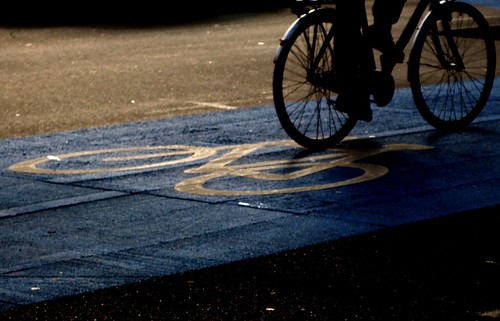
 Much is written about the Danish urban planner and architect Jan Gehl with regards to creating segregated bike infrastructure in cities in order to keep cyclists safe and to increase the number of cyclists in the urban landscape. It’s worth mentioning that it’s not all about the bike lanes. They are a fantastic symbol of intelligent urban planning, but Gehl’s thoughts and experiences with urban planning in general are far-reaching. His consultancy company Gehl Architects continue his important work.
Much is written about the Danish urban planner and architect Jan Gehl with regards to creating segregated bike infrastructure in cities in order to keep cyclists safe and to increase the number of cyclists in the urban landscape. It’s worth mentioning that it’s not all about the bike lanes. They are a fantastic symbol of intelligent urban planning, but Gehl’s thoughts and experiences with urban planning in general are far-reaching. His consultancy company Gehl Architects continue his important work.
I like this excerpt from an interview with Metropolis Magazine:
"One of the interesting things about Copenhagen is the gradual approach. "Public Spaces, Public Life" is the first ever recording of the life of a city. Every city counts its traffic one or two times a year, but hardly any city knows about what people do in a city and how the city is being used."In Copenhagen we've pioneered this as a working method: study what's going on, look at the problems and potentials, improve it, and check it again, so that you can follow the development. Observations like being able to point out that we have four times more public life in Copenhagen after twenty years of work, have been very strong in convincing people about the value of what has been going on. This book demonstrates for the first time the systematic study and recording of the people just as you would cars."In my new book "New City Spaces", we describe nine fascinating cities from around the world which have been made much more people-friendly, including: Barcelona; Lyon; Strasbourg; Freiburg, Germany; Portland, USA; Curitiba, Brazil; Cordoba, Argentina; Melbourne and Copenhagen. We talk about how these cities have applied different strategies to make them people-friendly."Copenhagen, in this context, is interesting because of the gradual approach. The city has never had a master plan. If city officials did have a master plan that would say for example, "Ten years from now we will have 100,000 square meters of pedestrianized and people-friendly streets, and we will remove 2,000 parking spaces from the downtown area," they would utterly fail in the next election."
And this excerpt about the four types of cities: "In "New City Spaces", we talk about four types of cities. The first is the "Traditional City" which was built for people moving about on feet and where you still have all the traditional city functions like meeting spaces and marketplaces. You can find this old model in cities like Venice, or in developing countries where cars have not yet penetrated."The second type is the "Invaded City". These are old cities where the balances among the various things going on in the city have been upset because everything is now car dominated. We have many of these cities in South and Central America, Europe, Asia, and in many developing countries. They were originally built for another type of city life and people are suffering heavily from this inundation of cars."The third city is the "Abandoned City," which is the next step an "Invaded City" goes through. That is when people give up walking and cycling and gradually the whole city fabric becomes adapted to everybody moving in cars: the public life ceases to exist. We have a number of examples in the book. I've seen plenty of examples of this in America, like a city in Mississippi, where there are no sidewalks, and everything happens in the mall or on television. That's why I find a city like Portland interesting, which is at the other end of the same country, and is very much like a European city."The fourth type of city, called the "Reconquered City", is included in a chapter called "Winning Back the Public Spaces". It's about a number of inundated or invaded cities which decided that unlimited car traffic is unacceptable, and have turned to improving their cities through public spaces and walking and cycling. We then give examples of reconquered cities--the nine aforementioned cities, and describe specific spaces, streets and squares all over the world that have been interestingly changed or newly built."
I found a great podcast from the City of Sydney featuring a talk with Jan Gehl. Listen to it on this website and hear the man speak.
Here's a good piece from Metropolis Magazine about Copenhagen's 10 Step Program.
While at the Royal Library to see a Sally Mann exhibition I saw Jan Gehl's books in the bookshop. I've heard they sometimes are hard to get a hold of but I've discovered that they are Available from The Danish Architectural Press. In English. They are wonderful sources of inspiration, not just for creating bike lanes and segregated bike infrastructure, but for creating cities worth living in.
Life Between Buildings - Using Public Space
Public Spaces Public Life
Authors: Jan Gehl, Lars GemzøeThis book describes the remarkable qualitative inprovements which have taken place in central Copenhagen over the past 34 years, and how they have been accomplished, and is a handbook on how to create human qualities in the city.New City Spaces
Authors: Jan Gehl, Lars GemzøeThis book presents an overview of the developments in the use and planning of public spaces, and offers a detailed description of 9 cities and 39 selected public space projects from all parts of the World. The book is extensively illustrated by drawings, plans and photographs.




